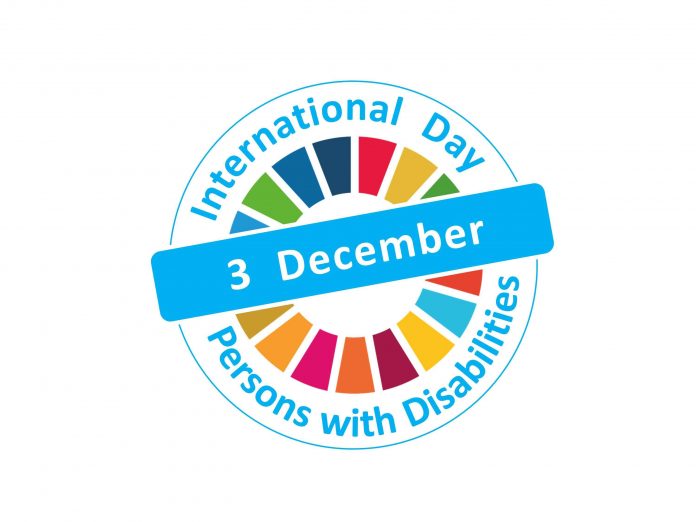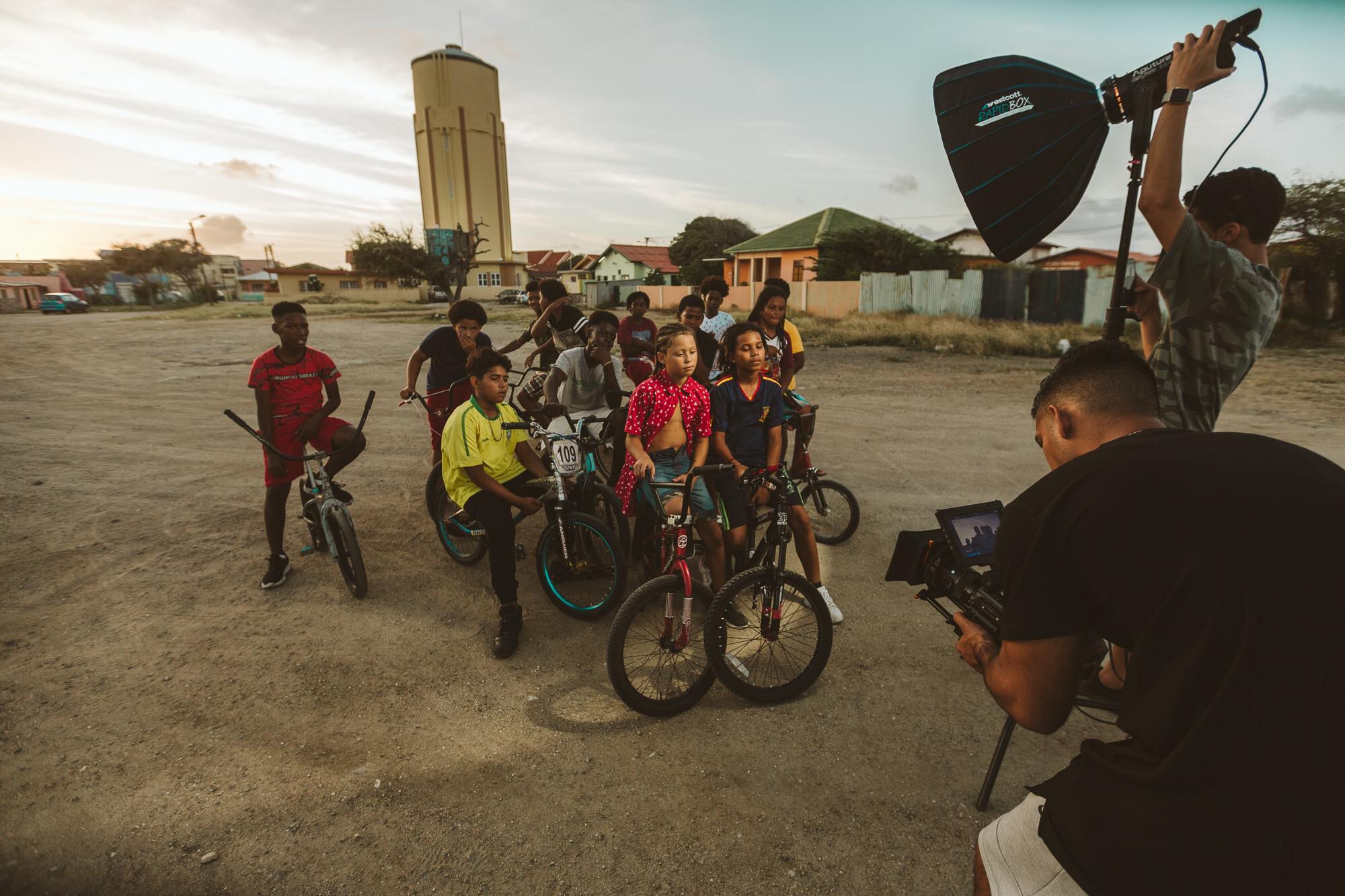Because of yesterday’s special day, Creative Islander wants to shed light and raise awareness in honor of those in our community who most times feel forgotten. December 4rd the entire world celebrates the International Day of Persons with Disabilities. The rainbow as we know it exists only due to the existence of different colors. In our community, let’s be allies for our people who live every day with a limitation, noticed or unnoticed. Big or small limitations, we as a community should be open to learn and protect all people so they feel empowered to live their authentic lives. Reducing inequalities and ensuring no one is left behind are integral to achieving the Sustainable Development Goals.
According to the WHO World Report on Disability, “15% of the world’s population, or more than 1 billion people, are living with some kind of disability. Of this number, it’s estimated 450 million are living with a mental or neurological condition— and two-thirds of these people will not seek professional medical help, largely due to stigma, discrimination and neglect. Another 69 million individuals are estimated to sustain Traumatic Brain Injuries each year worldwide, while 1 in 160 children are identified as on the autism spectrum”. (https://idpwd.org/). As a result of the COVID-19 health pandemic, isolation, disconnect, disrupted routines and diminished services have significantly impacted the lives and mental well-being of people with disabilities. Spreading awareness of visible and invisible disabilities, as well as these potentially damaging— and not always immediately apparent— impacts to mental health, is crucial as we continue to fight the battle against the corona virus.
How did this start?
The International Day of Persons with Disabilities (IDPD) is historically and annually celebrated on 3 December to promote the full and equal participation of persons with disabilities and to take action for the inclusion of persons with disabilities in all aspects of society and development. The United Nations Disability Inclusion Strategy (UNDIS) “provides the foundation for sustainable and transformative progress on disability inclusion through all pillars of the work of the United Nations: peace and security, human rights, and development. The Strategy enables the UN system to support the implementation of the Convention on the Rights of Persons with Disabilities (CRPD) and other international human rights instruments, as well as the achievement of the Sustainable Development Goals, the Agenda for Humanity, and the Sendai Framework for Disaster Risk Reduction”.
Who is considered disable?
In most parts of the world, also in Aruba, there are deep and persistent negative stereotypes and prejudices against individuals with certain conditions and differences. Culturally, being disable conduces the person to be stigmatized and creates a space for ignorance and lack of intent to understand the day to day struggles. These attitudes themselves also shape who is considered to be a person with a disability in each society as well as have contributed to a negative image of persons with disabilities. According to the United Nations, the term “persons with disabilities” is used to apply to all individuals with disabilities or limitations including those who have long-term physical, mental, intellectual or sensory impairments which, in interaction with several attitudinal and environmental impediments, hampers their full and effective participation in society on an equal basis with others. The language used to refer to persons with disabilities has played a significant role in the persistence of negative stereotypes. Clearly, terms such as “crippled” or “mentally retarded” are derogative and don’t help to empower them. Other terms such as “wheelchair-bound” or “disabled persons” emphasize the disability before the person, while in reality the person comes first.
In the Aruban society we have almost sheltered our children from other children that appear to be a bit different. We are sometimes fine with boasting our multi-cultural identity, but almost feel ashamed to be diverse on all fronts. When was the last time you have seen children with down syndrome, autism, medical impairments, physical impairments, mental impairments, visual impairments, speech impairments, and behavioral impairments walk in our society and fully participate as equal citizens? It almost feels like they are hidden and are nowhere to be seen. Disability is not something that resides in the individual as the result of some impairment. Disability resides in the society not in the person. A person in a wheelchair might have difficulties being gainfully employed not because of his/her condition but because there are environmental and infrastructural barriers such as inaccessible buses or staircases in the workplace which obstruct his or her access. Being limited, does not mean life has to be a limitation. Due to the lack of association within our community, many times we feel that it is not a priority to have policies in place that protect those in our community that just want to lead a normal life in the midst of their difference. Or we think that there are not enough disabled people for us to act and do something, but the message that send out is: “there is not enough disabled people in our community, so it is not necessary”.
The United Nations Disability Inclusion Strategy (UNDIS)
The latest policy strategy to combat social injustice of those who are disabled in our societies was drafted by the UN in 2018. According to the UN (2018) “mainstreaming, in combination with targeted measures, is the key strategy for achieving the inclusion and empowerment of persons with disabilities and their human rights” (p.6). This report is also a way to make the worries and experiences of individuals with disabilities an integral dimension of the design, implementation, monitoring and evaluation of policies and programs in all political, economic and societal spheres, so that persons with disabilities benefit equally and inequality is not perpetuated. Ultimately the goal is to achieve equality of outcomes and foster an inclusive culture. Aruba, has made some efforts in providing more equal opportunities for this marginalized community, but the leadership has mostly come from NGOs and community institutions that live and breathe this frustration daily. Aruba, has yet to develop an inclusivity strategy policy or even pass laws that protect disabled people in the community, at home, at work, or even at school.
The UNDIS is a multi-lateral strategic policy that serves to create a first step in the right direction. It consists out of 4 branches, which include; 1. Leadership, Strategic Planning & Management, 2. Inclusiveness, 3. Programming, and 4. Organizational Culture. This strategy seeks to stimulate the decision-making organs in communities around the world to pass laws that protect disabled people at the workforce or from being hired; that ensure quality education for all children, disabled or not; or that stimulates the development of proper infrastructure and technology that enables increased community participation. It also seeks to create institutional capacity to create programs and projects to support disabled people to further develop and create the space for consultancy and coaching.
I want to extend the call to all politicians, business managers and supervisors, social workers, health workers, parliament members, policy advisors, policy makers, NGO volunteers, parents, families and friends and the entire Aruban community, let’s become allies and do the work! Let’s give our children a chance. Reducing inequalities and ensuring no one is left behind are integral to achieving the Sustainable Development Goals. “Just because a man lacks the use of his eyes doesn’t mean he lacks vision.” – Stevie Wonder.















